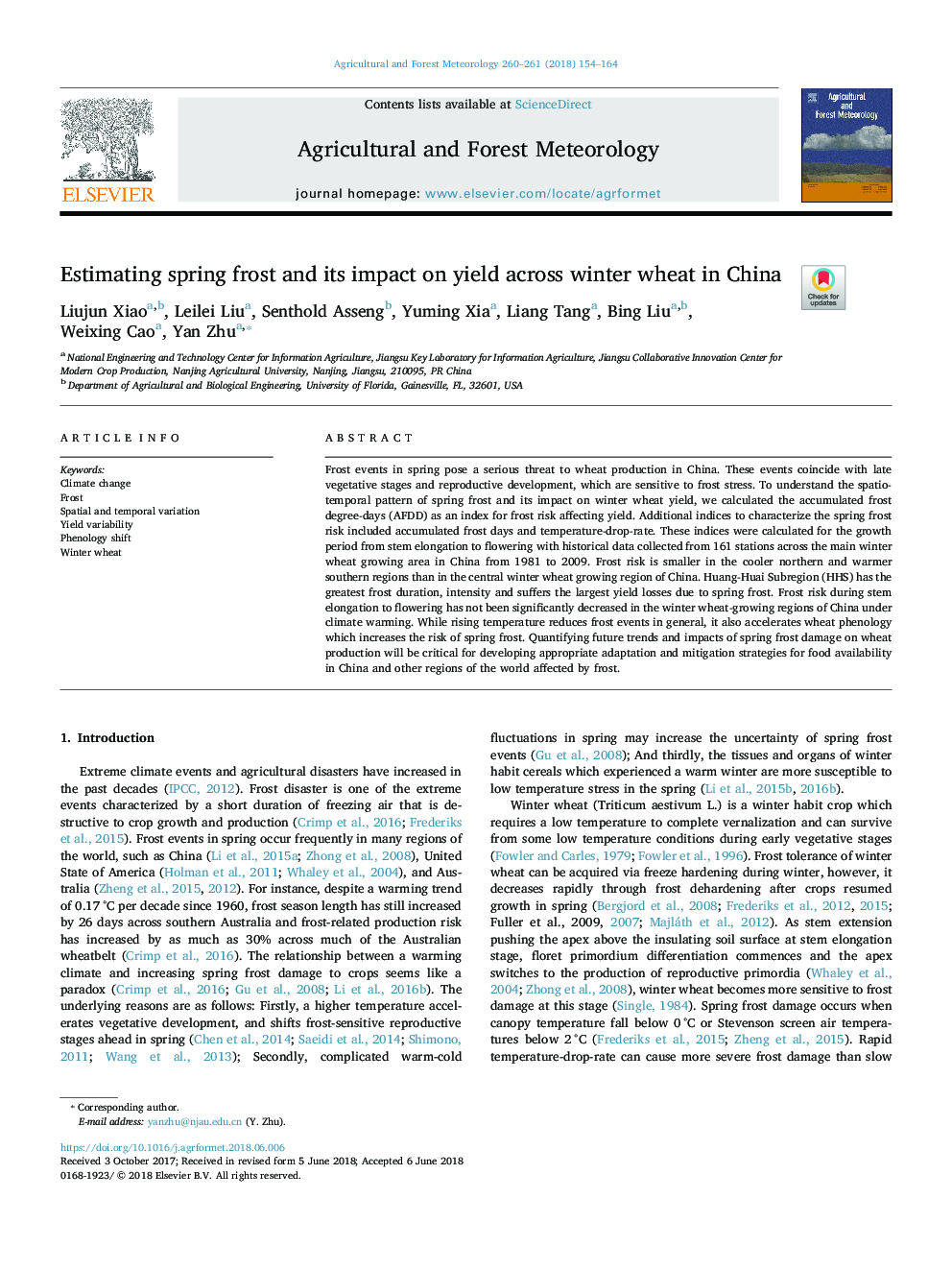| Article ID | Journal | Published Year | Pages | File Type |
|---|---|---|---|---|
| 6536610 | Agricultural and Forest Meteorology | 2018 | 11 Pages |
Abstract
Frost events in spring pose a serious threat to wheat production in China. These events coincide with late vegetative stages and reproductive development, which are sensitive to frost stress. To understand the spatio-temporal pattern of spring frost and its impact on winter wheat yield, we calculated the accumulated frost degree-days (AFDD) as an index for frost risk affecting yield. Additional indices to characterize the spring frost risk included accumulated frost days and temperature-drop-rate. These indices were calculated for the growth period from stem elongation to flowering with historical data collected from 161 stations across the main winter wheat growing area in China from 1981 to 2009. Frost risk is smaller in the cooler northern and warmer southern regions than in the central winter wheat growing region of China. Huang-Huai Subregion (HHS) has the greatest frost duration, intensity and suffers the largest yield losses due to spring frost. Frost risk during stem elongation to flowering has not been significantly decreased in the winter wheat-growing regions of China under climate warming. While rising temperature reduces frost events in general, it also accelerates wheat phenology which increases the risk of spring frost. Quantifying future trends and impacts of spring frost damage on wheat production will be critical for developing appropriate adaptation and mitigation strategies for food availability in China and other regions of the world affected by frost.
Related Topics
Physical Sciences and Engineering
Earth and Planetary Sciences
Atmospheric Science
Authors
Liujun Xiao, Leilei Liu, Senthold Asseng, Yuming Xia, Liang Tang, Bing Liu, Weixing Cao, Yan Zhu,
